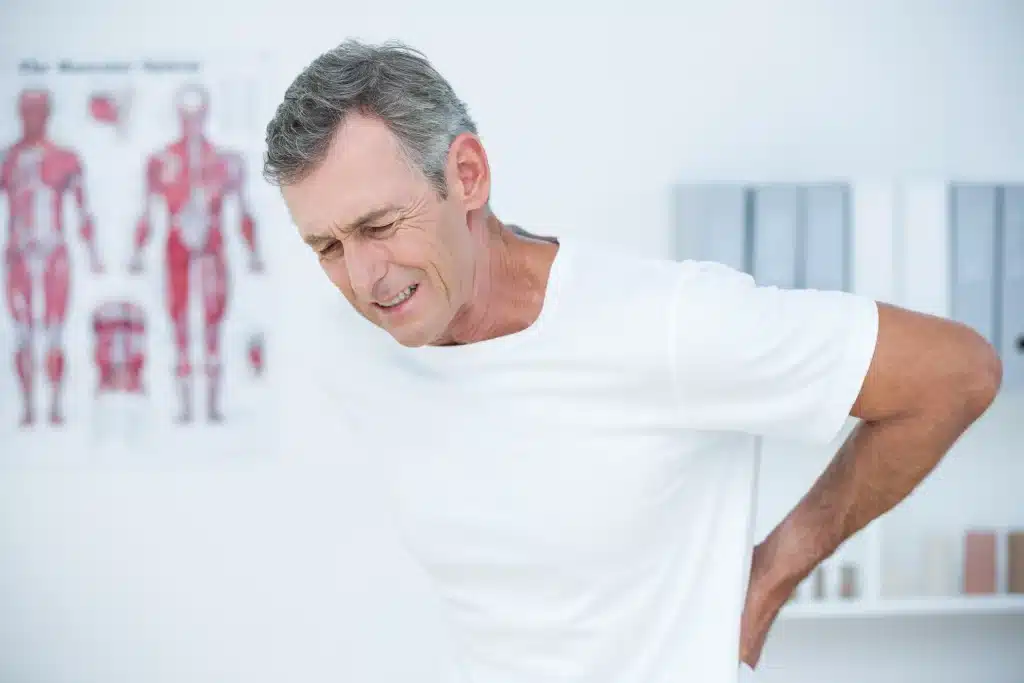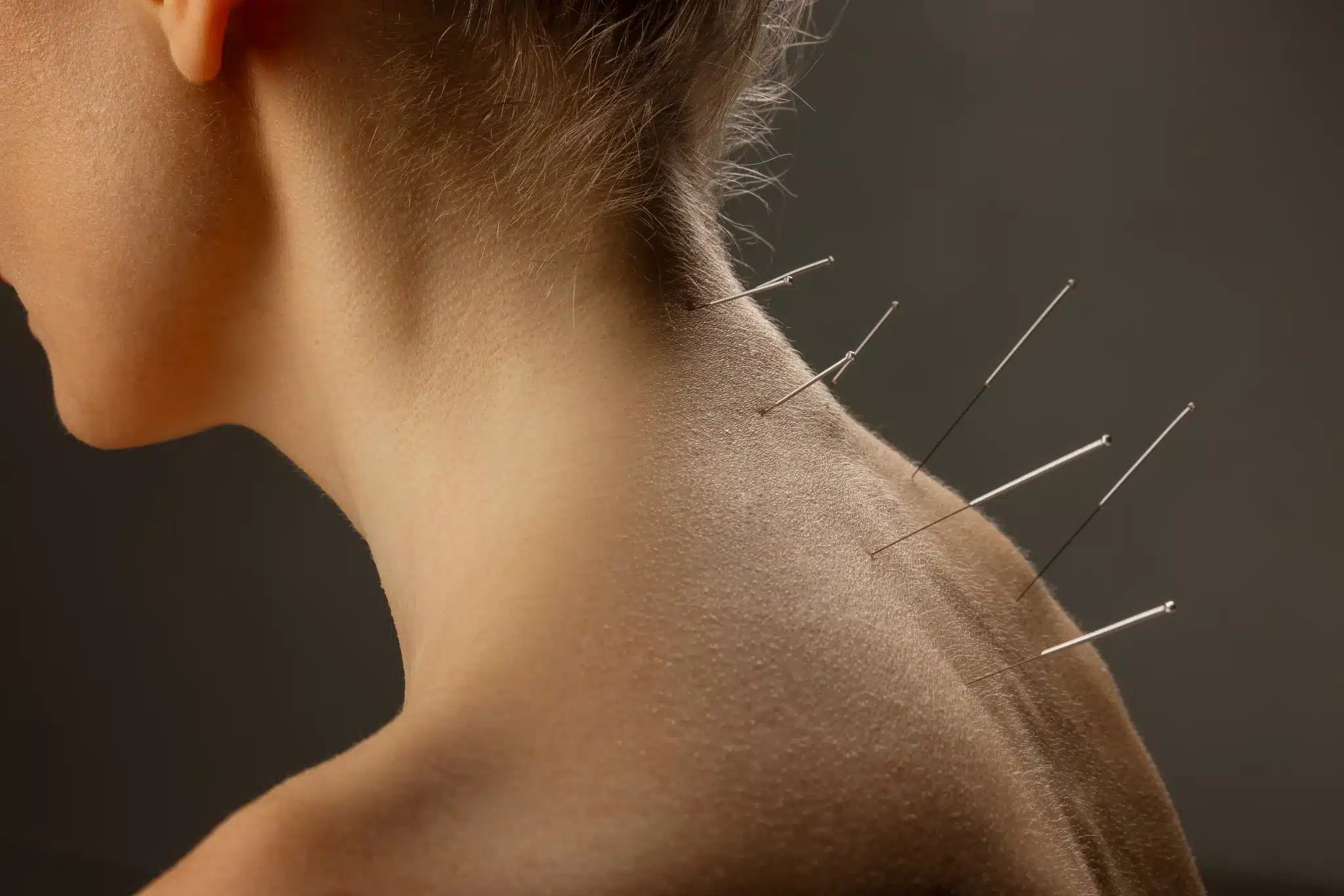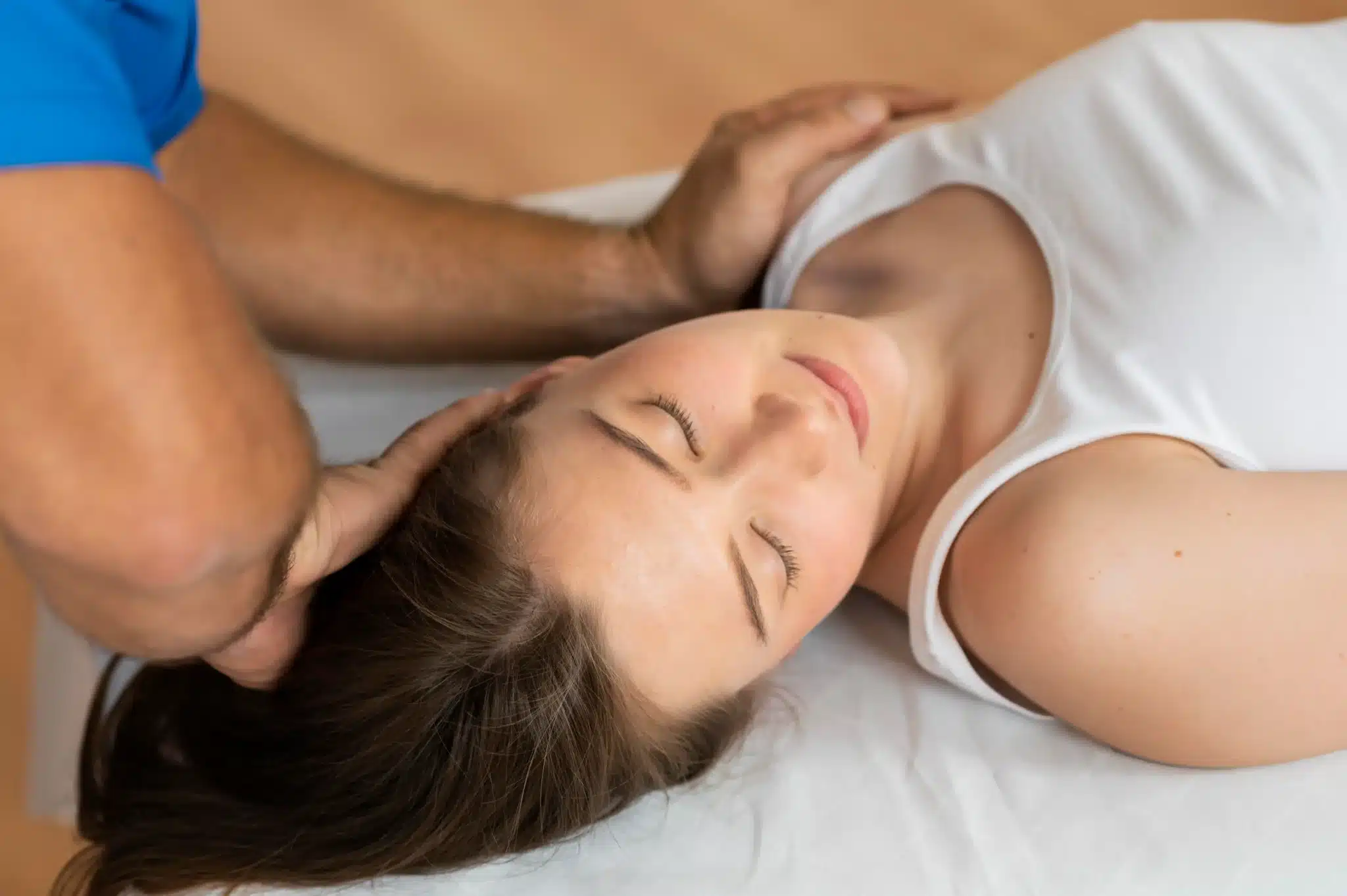Ever wondered why my lower back burns and hurts? This type of pain can severely impact your comfort and disrupt daily life. For many, it’s more than just an annoyance—it significantly affects their quality of life. In fact, around 80% of people experience back pain at some point, highlighting the importance of understanding its causes and finding effective solutions.
Dr. Eric Freeman, a pain management expert, says acting fast is key to avoid long-term pain. Many things can cause this burning feeling, from vertebrogenic low back pain (ICD 10) to pain after squats. Let's explore these reasons to help you tackle this common problem.

A close-up of a silhouette of a person clutching their lower back, surrounded by abstract representations of heat waves and pain indicators, with soft, warm colors blending into cool tones, symbolizing discomfort and relief. The background features a calming gradient that contrasts with the intense focus on the back pain.
Key Takeaways
- About 80% of the population experiences back pain at least once in their lifetime.
- Burning back pain varies in intensity and frequency depending on several factors.
- Lifting weights and sports activities significantly impact the lumbar region.
- Chemical radiculitis can result from repeated spinal column injuries.
- Regular exercise, good posture, and preventive measures help manage back pain.
- Timely diagnosis and treatment are essential to avoid chronic pain and disability.
Common Causes of Burning Sensation in the Lower Back
A burning sensation in the lower back can come from many sources. These include spinal problems, nerve compression, and other structural issues. Knowing these causes is key to finding the right treatment.

Illustration of an abstract representation of lower back pain, featuring highlighted vertebrae and nerves with a glowing red area indicating inflammation, a sciatic nerve diagram overlay, and gentle gradient colors suggesting heat and discomfort, minimalistic style.
Spinal Problems
Spinal issues are a big reason for this burning feeling. Problems like *degenerative disc disease* can cause pain, numbness, and tingling. This happens because the discs between the vertebrae break down.
Spinal arthritis, common in people over 55 or those who are overweight, also causes these symptoms.
Pinched Nerve
A pinched nerve, often from sciatica or herniated discs, can lead to vertebrogenic pain. Sciatica happens when a muscle presses on the sciatic nerve, causing a burning feeling that goes down to the feet. Herniated discs can also cause m54.51 symptoms, like pain and burning in the lower back.
Skeletal Defects
Skeletal defects, like scoliosis, can put abnormal stress on the spine. This stress can cause vertebrogenic pain. Such structural problems can change how the spine works, leading to long-term discomfort and burning.
Muscle Spasms and Strains
Muscle spasms and strains, often from overuse or injury, can also cause burning in the lower back. The inflammation that follows can make the area feel hot and burning.
Tumors
In rare cases, tumors can press on nerves or the spinal cord, causing m54.51 symptoms. Though rare, tumors should be considered when looking for the cause of chronic back pain.
| Condition | Main Symptoms |
|---|---|
| Degenerative Disc Disease | Burning, numbness, tingling, radiating pain |
| Sciatica | Burning sensation down the leg |
| Spinal Arthritis | Stiffness, burning sensation in lower back and upper leg |
| Herniated Disc | Pain, numbness, burning in lower back |
| Scoliosis | Chronic discomfort, burning sensations |
Symptoms Associated with Burning Lower Back Pain
Feeling burning pain in your lower back can come with other symptoms. These symptoms can help figure out what's causing the pain. Knowing these signs is key to finding the right treatment.
Reddish Inflammation
Seeing bluish or reddish inflammation is a sign of trouble. It could mean muscle overuse, injury, or even skin infections. This kind of inflammation can make pain worse and might point to serious health issues. If you see this, it's important to see a doctor to get it checked out.
Numbness and Tingling
Numbness and tingling often mean nerve problems. This could be sciatica, herniated discs, or even Multiple Sclerosis (MS). Up to 15% of Lyme disease patients also feel this way. If you have burning pain with numbness and tingling, it might mean nerve damage. You might need to use a back pain location chart meaning to figure it out.
A detailed anatomical illustration of the lower back, highlighting various potential causes of burning pain, such as muscle strain, herniated disc, and sciatica. Include visual representations of nerves, muscles, and the spine in a professional medical style, with an emphasis on clarity and educational value.
Muscle Ache and Weakness
Muscle pain and weakness can also happen with burning lower back pain. These signs are common in fibromyalgia, causing widespread pain. The National Multiple Sclerosis Society says 55% of people with MS have pain. This pain can make muscles weak and stiff. It's important to check these symptoms to find the right treatment.
| Symptom | Potential Causes |
|---|---|
| Reddish Inflammation | Infection, Muscle Overuse, Injury |
| Numbness and Tingling | Nerve Compression, Lyme Disease, Sciatica, MS |
| Muscle Ache and Weakness | Fibromyalgia, MS, Muscle Injuries |
Knowing these symptoms and what they mean can help find the right treatment. This can make life better and reduce pain.
My Lower Back Burns and Hurts: Potential Diagnoses
Lower back pain is a common problem that leads many to see doctors, miss work, and face disabilities. Finding out what causes this pain is key to feeling better. Knowing the possible diagnoses helps people get ready for their doctor visits.
Diagnosing the Condition
Doctors use many tests to figure out lower back pain. They might do blood tests, X-rays, CT scans, or MRIs. These tests help find problems like muscle spasms, herniated discs, or even cancer.
Most back pain gets better with home care and self-help in a few weeks. Surgery is rarely needed.
Using a Back Pain Location Chart
A lower back pain locator is very helpful. It helps patients show exactly where it hurts. This tool helps doctors find the cause of the pain more easily.
It shows patterns and where the pain is. This is key in figuring out what's wrong with the back.
Differential Diagnoses
Doctors compare symptoms and test results to find the cause of pain. They might look at things like spinal stenosis, kidney infections, or broken vertebrae. This helps them create the right treatment plan.
Plans can range from physical therapy to more serious treatments. The goal is to stop the pain and improve life quality.
Effective Solutions and Treatments for Burning Back Pain
When it hurts to stand up straight and the burning back pain won't subside, it's crucial to consider various effective solutions and treatments. These range from physical activities to advanced medical interventions.
Exercise and Physical Therapy
Physical therapy and exercise play pivotal roles in relieving burning back pain. A 2019 study suggests that activities such as yoga, Pilates, Tai Chi, and core stability exercises not only improve posture but also alleviate discomfort in the back. Moreover, aerobic exercises, walking, running, and swimming can significantly reduce the pain. Combining physical therapy with lifestyle adjustments under the guidance of specialists like Dr. Todd Albert can show remarkable improvements.
Proper Lifting Techniques
Adopting the correct lifting techniques is essential to avoid exacerbating back pain. Always lift with your knees and maintain a straight back to prevent strain. Additionally, maintaining an ergonomic workspace can eliminate unnecessary strain and keep back pain off.
Medical Treatments and Interventions
Various medical treatments can offer relief from burning back pain. Over-the-counter pain relievers such as NSAIDs, ibuprofen, and naproxen work to reduce inflammation. For severe cases, prescription medications like muscle relaxants, opioids, and corticosteroids may be advantageous. In certain scenarios, particularly for issues like spinal tumors, surgeries or more extensive treatments such as radiation and chemotherapy are necessary. Complementary therapies, including applying menthol or using CBD creams, have also shown promising results in recent studies.
Preventive Measures
Prevention is better than cure. Simple measures can help keep back pain off. Maintaining a healthy weight, quitting smoking, and ensuring adequate sleep are fundamental. Research indicates that poor-quality sleep increases the risk of chronic back pain. Furthermore, engaging in mindfulness meditation, progressive muscle relaxation, and guided imagery can relieve stress-related pain.
Conclusion
Lower back pain affects millions, appearing suddenly or gradually. This article has covered the many causes and symptoms, from dull aches to sharp pains. Understanding the exact cause is key.
Getting the right diagnosis is vital for managing pain. Common causes include muscle strains and degenerative disc disease. But, severe conditions like cauda equina syndrome need quick attention.
Chiropractic care is becoming a popular, safe option. Studies show it can reduce pain and improve body functions. For more on treatments like spinal manipulation, check out the different types of chiropractic adjustments.
If you have ongoing lower back pain, see a doctor early. A detailed diagnosis leads to effective treatment plans. These steps can ease pain, speed up recovery, and prevent worse problems, improving your life quality.
FAQ
What causes my lower back to burn and hurt?
Many things can make your lower back hurt and feel like it's burning. This includes spinal problems, pinched nerves, and muscle spasms. It could also be due to skeletal defects or tumors. It's best to see a doctor to find out for sure.
How can vertebrogenic low back pain be identified?
Vertebrogenic low back pain is a specific type of pain. It comes from the vertebrae or spinal joints. Doctors use physical exams, MRIs, and a back pain chart to spot it.
What should I do if my lower back hurts after squats?
If your back hurts after squats, check your form. You might have strained a muscle or hurt something. A physical therapist or doctor can help figure out what's wrong and how to fix it.
What symptoms usually accompany burning lower back pain?
Burning lower back pain often comes with inflammation, numbness, and tingling. You might also feel muscle aches and weakness. These signs can make everyday tasks hard and mean you need to see a doctor.
How can I differentiate between different causes of lower back pain?
Use a back pain chart and get a detailed diagnosis. Doctors will use tests, exams, and tools to find out why you're in pain. They'll look at things like vertebrogenic pain and muscle spasms.
What treatments are available for burning lower back pain?
Treatments depend on the cause of your pain. They might include exercises, physical therapy, and learning how to lift right. Doctors might also prescribe medication or suggest surgery. Staying healthy and not smoking can also help.
How can I prevent my lower back from hurting when I stand up straight?
To avoid back pain when standing, keep good posture and do exercises. Use proper body mechanics in your daily life. If pain doesn't go away, get medical advice.
Medicare Finalizes Decision to Cover Acupuncture for Chronic Low Back Pain (M54.51)





